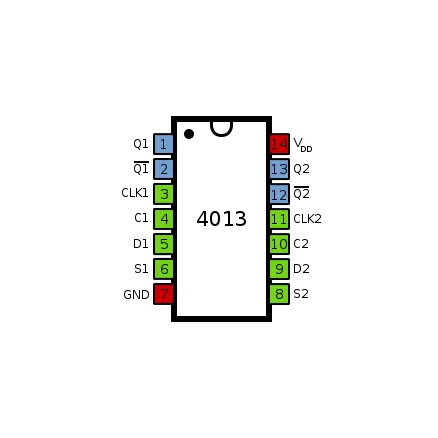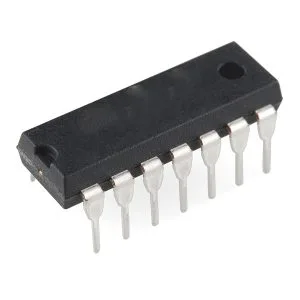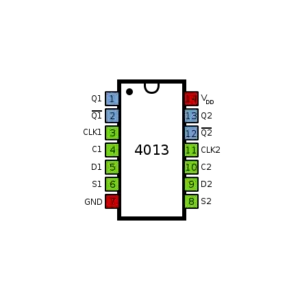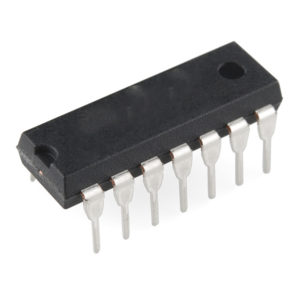4013 Pinout Description
| Pin No | Pin Symbol | Name | Description |
| 1,13 | 1Q/2Q | Output | Output Pin of the Flip Flop |
| 2,12 | 1Q’(bar)/2Q’(bar) | Complementary Output | The inverted output pin of Flip Flop |
| 3, 11 | 1CP/2CP | Clock Input Pin | These pins must be provided with a clock pulse for the flip-flop |
| 4,10 | 1CD/2CD | Clear Data | Resets the flip-flop by clearing its memory |
| 5,9 | 1D/2D | Data Input Pin | Input pin of the Flip Flop |
| 6,8 | 1SD/2SD | Set-direct Input | Another Input pin for Flip Flop |
| 7 | Vss | Ground | Connected to the ground of the system |
| 14 | Vdd/Vcc | Supply Voltage | Powers the IC typically with 5V |
Specifications
| Product Attribute | Attribute Value |
| Product Category: | Flip-Flops |
| Number of Circuits: | 2 |
| Logic Type: | D-Type Flip-Flop |
| Polarity: | Inverting/Non-Inverting |
| Input Type: | CMOS |
| Output Type: | CMOS |
| Propagation Delay Time: | 300 ns |
| High-Level Output Current: | – 1.5 mA |
| Low-Level Output Current: | 1.5 mA |
| Supply Voltage – Min: | 3 V |
| Supply Voltage – Max: | 18 V |
| Minimum Operating Temperature: | – 55 C |
| Maximum Operating Temperature: | + 125 C |
| Mounting Style: | Through Hole |
| Package/Case: | PDIP-14 |
| Packaging: | Tube |
| Function: | Dual CMOS |
| Number of Channels: | 2 |
| Number of Input Lines: | 1 |
| Number of Output Lines: | 1 |
| Operating Supply Voltage: | 10 V |
| Operating Temperature Range: | – 55 C to + 125 C |
| Quiescent Current: | 20 uA |
| Reset Type: | Set, Reset |
How to use D Flip-Flop (4013)?
Using a Flip-Flop is pretty straightforward. Simply power the IC using the 7th and 14th pins. As told earlier each flip-flop operates independently, just connect the input signals 5 and 6 for using the 1st flip-flop and you will get the output at pins 1 and 2. Pin 3 should be provided with a clock source normally a PWM signal from an MCU or 555 timer is used. The pin can be used to clear the data and reset the flip-flop by making it high. The complete working of the Flip flop can be understood by looking at the function table below. The symbol “X” indicates don’t care and the up-arrow indicates the rising edge of the signal.

You can also simulate the IC to check if it would work as desired. Here I have used logic state and logic bits to view if the IC functions as it is supposed to, but you can replace them with the actual circuitry of your application to check if it would suit your needs. The gif file shown below can be verified with the truth table given above to make sure that the IC works as desired.

Applications
- Used as Shift Registers
- Memory/Control Registers
- Buffer Circuits
- Sampling Circuits
- Latching devices











Reviews
There are no reviews yet.